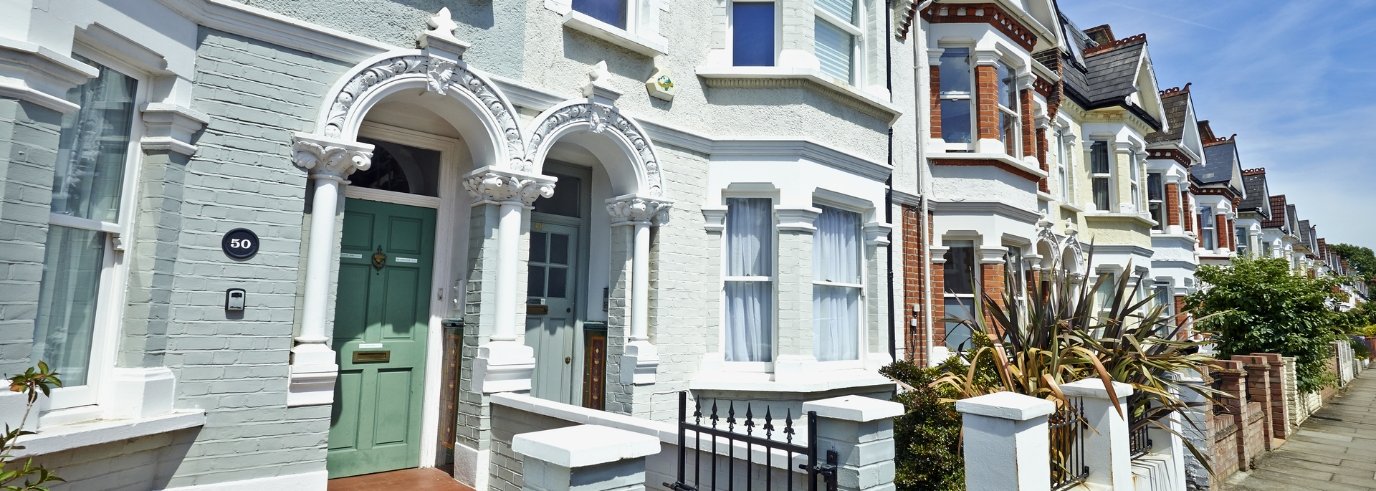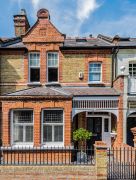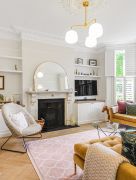
Why Victorian properties are so popular
High ceilings, feature fireplaces and bay windows – there’s good reason people want to call Victorian properties home.
31 March, 2023
According to Historic England, over a quarter of the British population live in Victorian homes*. It’s little surprise considering the reign of Queen Victoria saw the biggest building boom in UK history with more than six million houses built between 1837 and 1901, the majority of which still stand today.
Queen Victoria reigned for almost 64 years, longer than any previous monarch and was eclipsed only by Queen Elizabeth II. She was the first sovereign to take up residence at Buckingham Palace. During her reign, which ended in 1901, Britain experienced huge economic, political and societal change driven by the Industrial Revolution. This resulted in a shift from an agrarian to a manufacturing economy, leading to increased production and efficiency, lower prices, improved wages and migration from rural to urban areas.
According to The National Archive, at the start of the 19th century about 20% of Britain's population lived in London, but by 1851 half the country’s population lived in the Capital.** It was at this time that the terrace house – or the Victorian terrace, as we now call it – became the archetypal dwelling for families living in the city and emerged as a sanctuary from arduous working life.
Known for its durability, thanks to the high quality of materials such as brick, stone and cast iron used in its construction, Victorian architecture has stood the test of time. Victorian buildings often feature high ceilings and large windows, which create that bright and spacious feel that is highly sought after in homes today, yet their unique character features make them stand out from a new build style of home. Victorian homes also lend themselves beautifully to modern day living with many being transformed over the years to suit contemporary living with big open plan kitchens.

London is awash with prime examples of Victorian property. Robert McLaughlin, KFH sales director of north, northwest and west London says “from small, terraced houses to grand villas, Victorian properties have an abundance of character details that remain popular and in demand with today’s buyers.”
Victorian properties have an abundance of character details that remain popular and in demand with today’s buyers.
With the creation of the Royal Institute of British Architects in 1837, architects were given more freedom to experiment with styles, which is one of the reasons why homes built in the Victorian period not only reflect design styles of the previous Georgian era, but new styles such as Arts & Crafts, Gothic Revival and Italianate.
At the start of the Victorian era, buildings were constructed using traditional materials, such as brick and stone, but the arrival of the railway in 1825 made transportation of other building materials across the UK much easier. Builders began using terracotta on rooftops and facades while cast-iron decorative railings and gates also became a popular feature.
The arrival of plate glass was another big change from the Georgian era, which helped create larger, single or double paned sash windows, often incorporated into a bay, another hallmark of British Victorian architecture, giving the perception of larger living space and allowing for plenty of natural light.
But it is probably the ornate details, such as decorative mouldings, intricate tile work, and stained-glass windows, which Victorian properties are most loved and appreciated for. These details not only add to the visual appeal of the buildings, but also give them that special charm, which is so sought after by the modern buyer.

“If we are lucky enough to market a Victorian home with most or all of these features, demand from buyers will always be high and their charm never really seems to go out of fashion,” says McLaughlin. “Victorian homes are as practical for today’s families as I am sure they were back then, although they do tend to have inside WCs now and fewer baths in kitchens!”
If we are lucky enough to market a Victorian home with most or all of these features, demand from buyers will always be high and their charm never really seems to go out of fashion.
Feature fireplaces
Open fires were the only form of heating in Victorian days, so most rooms would have their own fireplace. Early on they were made from marble or slate, but later cast-iron frames became popular, offset by decorative mantel shelves and colourful tiling down either side.
High ceilings with cornices and ceiling roses
Victorian houses were designed with high ceilings to give the illusion of generous space, even in smaller terraced properties, while the quality of wall and ceiling mouldings was directly related to the status of the house. The more ornate, the grander the home.
Bay, sash and stained-glass windows
Victorian housing is excellent for maximising natural light thanks to large sash windows, usually arranged in a bay. Stained glass in front door frames illuminate the house’s hallways.
Tiled floors and patterned brickwork
By the end of the 19th century developments in manufacturing allowed for high quality machine-made bricks to be produced in a variety of colours, which were used to brighten the facades of Victorian properties. Similarly, tiled hallways were common to set the scene for guests entering a home.

Here to help
Looking for your own Victorian property to call home? Let us get you started, contact your local branch.